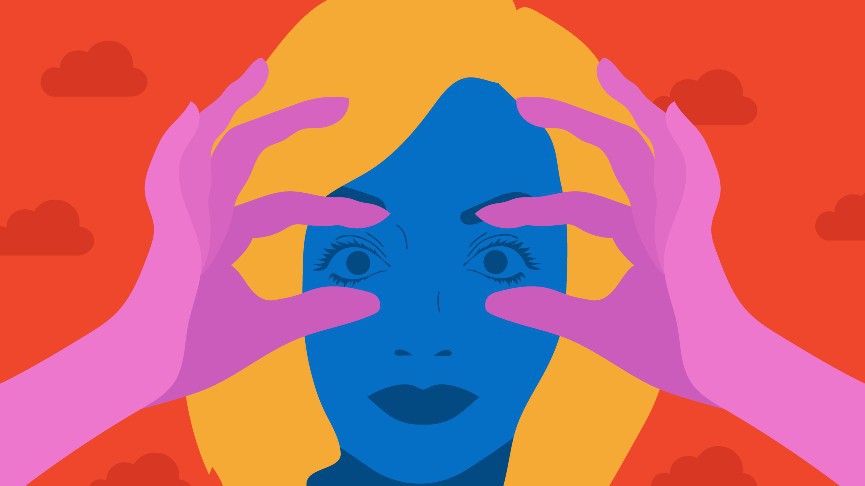What is Chronic Fatigue Syndrome

This article was medically fact-checked by Consultant Obstetrician and Gynaecologist Dr. Shree Datta.
Chronic fatigue syndrome is a buzzword in the health and wellness field. But it’s not something to be taken lightly.
People who have chronic fatigue syndrome or symptoms of it have to deal will say it is debilitating and impacts every area of their life.
Chronic fatigue syndrome is sometimes called myalgic encephalomyelitis.
CFS is more than just feeling a little tired. Chronic fatigue syndrome can make it difficult to study, work, do daily activities, and even get out of bed.
What are The Symptoms of CFS?
While sleep problems are a common symptom of it, people with CFS will still have severe fatigue, even after resting.
It can be difficult to be physically active or do mentally demanding tasks as they might have worsened symptoms after, called post-exertional malaise which can last for over twenty-four hours. They may have other symptoms that interfere with daily activities like impaired memory and concentration, insomnia, weakness, and muscle pain.
Chronic fatigue syndrome has eight characteristic symptoms outside of fatigue:
- Pain in multiple joints.
- Post-exertional malaise.
- Muscle pain.
- Substantial impairment in memory and concentration.
- A sore throat.
- Tender neck or armpit lymph nodes.
- Headaches that are a new pattern, type, or severity.
- Sleep that doesn’t leave them refreshed.
About twenty to fifty percent of people with CFS may also experience less common symptoms including:
- Dry eyes or mouth
- Nausea
- Jaw pain
- Morning stiffness
- Night sweats
- Abdominal pain, bloating, and diarrhea
- Alcohol intolerance
- Chest pain or chronic cough
- An irregular heartbeat
- Skin or tingling sensations
- Weight loss
- Mental health issues like depression, irritability, anxiety, and panic attacks.
What Causes Chronic Fatigue Syndrome?
The cause of CFS is not known, yet researchers have different theories revolving around psychological, immunological, endocrine-related, and nervous system-related causes.
Like with many chronic diseases, genetics and environmental factors may play a role in the development of CFS.
How is CFS Diagnosed?
It’s not uncommon for people to have symptoms that last for years, without a clear diagnosis.
The tricky thing is that there are no exact tests for chronic fatigue syndrome or physical markers to look for, it’s all based on reported symptoms.
Diagnosis is further complicated because its symptoms are similar to other diseases like fibromyalgia, narcolepsy, hypothyroidism, autoimmune disease, chronic mononucleosis, lupus, multiple sclerosis, rheumatoid arthritis, cancer, hormonal disorders, and more.
Symptoms of CFS can also resemble mental health conditions like schizophrenia, eating disorders, alcohol or substance abuse, bipolar affective disorder, and clinical depression.
If your healthcare provider suspects you may have CFS, you may have to be screened and tested for numerous other diseases and ailments before a CFS diagnosis is given. This is to rule out any conditions which may indeed be treatable.
In 1994, an international panel of chronic fatigue syndrome research experts outlined diagnostic criteria to help with diagnosis.
The two criteria a patient must meet to be diagnosed are:
- “Have severe chronic fatigue of six months or longer duration with other known medical conditions excluded by clinical diagnosis.”
and:
- “Concurrently have four or more of the following symptoms: substantial impairment in short-term memory or concentration; sore throat; tender lymph nodes; muscle pain; multi-joint pain without swelling or redness; headaches of a new type, pattern or severity; unrefreshing sleep; and post-exertional malaise lasting more than 24 hours.”
They further specify by saying that symptoms should not have started before the fatigue and that they must persist for six or more consecutive months.
Who is at Risk For CFS?
An estimated 836,000 to 2.5 million people living in the U.S. have Chronic Fatigue Syndrome, while less than twenty percent of those people have received a definitive diagnosis from a healthcare provider.
Of course, this doesn’t mean it’s limited to people just in the U.S. People all over the world have chronic fatigue syndrome, of all different races and ethnicities. It’s believed to be just as common against Black people as it is amongst Hispanic and white people.
People between the ages of forty to sixty are most likely to get it, but anyone can. It is more common in women and female-bodied people, affecting women at four times the rate of men.
Younger people can get it, but it’s more common in adolescents than in kids.
There aren’t exact statistics about who is most at risk for CFS, because it’s often undiagnosed or misdiagnosed.
How is CFS Treated?
Unfortunately, there is no known cure for chronic fatigue syndrome, and available treatments might not help all patients.
Experts typically recommend a combination of lifestyle changes along with drug therapies.
Lifestyle changes usually revolve around dietary restrictions, lowering stress levels, preventing overexertion, doing gentle stretches, moderate physical therapy without overexertion, and taking supplements.
Typically the sooner someone begins treatment, the better. Experts found that people who have been diagnosed for less than two years were more likely to improve. Full recovery is rare, occurring in about five to ten percent of patients, while an average of forty percent of patients was able to have some improvement of symptoms.
If you think you may have chronic fatigue syndrome, track your symptoms, and reach out to your healthcare provider. As frustrating as it may be, you may need to seek multiple providers and get different opinions before getting a proper diagnosis and treatment plan. Be easy on yourself through the process.
Facts Checked By:

Dr. Shree Datta is a Consultant Obstetrician and Gynaecologist in London, specialising in women’s health including all menstrual problems such as fibroids and endometriosis. Dr. Shree is a keen advocate for patient choice, having written numerous articles and books to promote patient and clinician information. Her vision resonates with INTIMINA, with the common goals of demystifying periods and delivering the best possible care to her patients.
Article written by:

Natasha (she/her) is a full-spectrum doula and health+wellness copywriter. Her work focuses on deconstructing the shame, stigma, and barriers people carry around birth, sex, health, and beyond, to help people navigate through their lives with more education and empowerment. You can connect with Natasha on IG @natasha.s.weiss.


